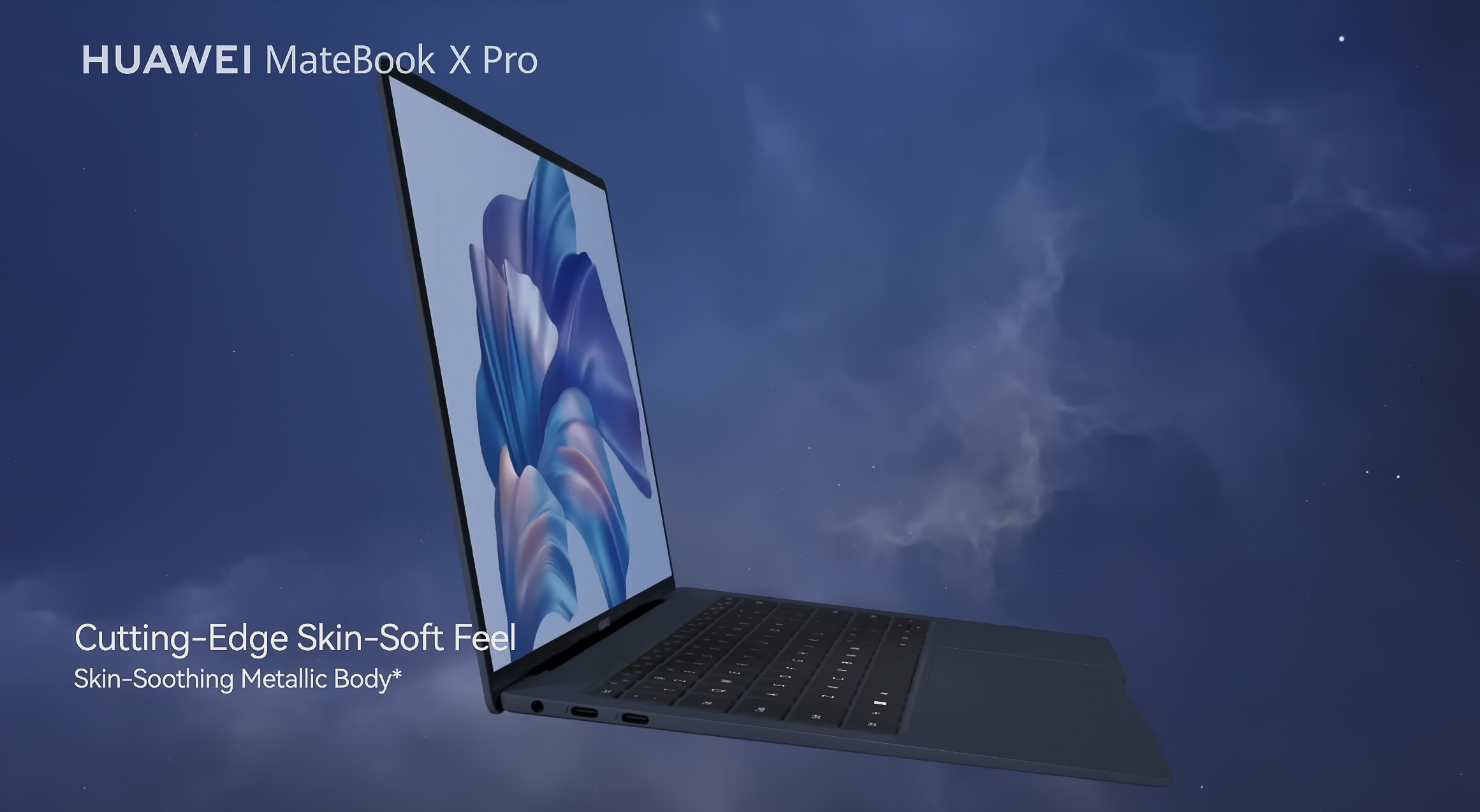Huawei's Kirin X90 may be the company's 'Apple Silicon' moment — Matebook Pro 2025 features in-house hardware and software
Huawei aims to chip away at Apple's ecosystem.

Yesterday, Huawei unveiled its Matebook Pro 2025 laptops, powered by HarmonyOS, the firm's newly developed operating system, independent of Linux and Android, breaking free from Microsoft's shackles. At the event, Chinese enthusiasts had a go with the machine. They discovered it reportedly features a new SoC from Huawei's chip subsidiary HiSilicon, the Kirin X90, built on a custom Arm-based design. This might be Huawei's "Apple silicon" moment, integrating its devices with in-house software and hardware, though compatibility with already-developed applications remains an open question.
Following sanctions imposed in 2020, the US significantly limited Huawei in its ability to work with international chip designers and manufacturers. Within a short span, the firm was forced to rely on indigenous alternatives, sourcing chips from its HiSilicon division, with manufacturing primarily handled by China's SMIC. Unlike Loongson's chips, which employ its custom LoongArch architecture, Huawei's cores utilize off-the-shelf Arm Cortex designs, and now its own Arm-based Taishan V-series architectures.
Huawei's laptops have mostly been powered by hardware from AMD/Intel, with a few exceptions. While Huawei showcased its upcoming HarmonyOS-powered Matebook Pro laptops, enthusiasts found evidence that the Kirin X90 SoC powers them through the system information. Further details by leaker Digital Chat Station suggest the Kirin X90, codenamed Charlotte Pro, wields a 10-core (4+4+2) / 20-thread layout.
The design is said to mirror the Kirin 9010, found on Huawei's Pura 70 series mobile phones. Therefore, the four prime cores will likely utilize the Taishan V121 architecture. In contrast, the performance cores step down to Taishan V120, and the efficiency cores probably use a standard Cortex design, likely the Cortex-A510.
Kirin X90 https://t.co/olAhXrC6NW pic.twitter.com/QMM3zuTKWDMay 9, 2025
There aren't many performance indicators yet, but server-oriented designs, likely the Kunpeng 930, of the Taishan V120 architecture, match AMD's Zen 3 in single-core performance. The Kirin X90 will still probably be built using SMIC's aging 7nm process node, which is the likely bottleneck. Having their own OS and silicon makes Huawei less dependent on Western tech. It ensures tighter integration within its ecosystem, leading to better optimization, reliability, faster development, and performance.
So, how many developers will port their existing apps to HarmonyOS? That depends on how well the platform takes off. Compatibility layers are a solution, but in the end, if Huawei wants a bite of Apple's market share, it needs a strong ecosystem, including essential daily apps. That being said, building homegrown software alternatives is also an option that fits China's ambitions of tech autarky. No matter what, we can expect to see some actual performance tests of the chip once the Matebook Pro comes out on May 19.
Follow Tom's Hardware on Google News to get our up-to-date news, analysis, and reviews in your feeds. Make sure to click the Follow button.
Get Tom's Hardware's best news and in-depth reviews, straight to your inbox.

Hassam Nasir is a die-hard hardware enthusiast with years of experience as a tech editor and writer, focusing on detailed CPU comparisons and general hardware news. When he’s not working, you’ll find him bending tubes for his ever-evolving custom water-loop gaming rig or benchmarking the latest CPUs and GPUs just for fun.
-
cyrusfox I picked up a Huawei Phone overseas, they do a great job of integrating with other available apps and enabling it to work. the radio bands aren't the best in the US, but the battery life is phenomenal, and the speed is great. Dual sim and micro SD for ~$80usd, great product, crappy camera though...Reply
I think they will find a way to enable native running, imagine it is similar enough to Android and they will get most applications over their whether developer supported or not. -
JamesJones44 ReplyMatebook Pro
I seriously don't understand the desire to clone names. Is it really that hard to come up with a unique name that doesn't sound and look like Apple's "Macbook Pro"? -
Pierce2623 It has half the performance of an M4 with 1/4 the apps. I’m not seeing an Apple moment. I’m seeing other Chinese phone companies that stay on Android cannibalizing them.Reply -
zsydeepsky Reply
"Mate" is their brand, which first appeared with their phones, such as the Mate 60.JamesJones44 said:I seriously don't understand the desire to clone names. Is it really that hard to come up with a unique name that doesn't sound and look like Apple's "Macbook Pro"?
They also have other product lines such as MatePad, which you won't consider as "cloning" of iPad for sure, and MateView monitors.
So they are just going with their own brand, and to be fair, at this point, "Mate" is a much more prominent brand in the Chinese market compared to "Mac". -
JamesJones44 Reply
Sure the "Mate" part I get, but Matebook Pro is a clear clone naming scheme.zsydeepsky said:"Mate" is their brand, which first appeared with their phones, such as the Mate 60.
They also have other product lines such as MatePad, which you won't consider as "cloning" of iPad for sure, and MateView monitors.
So they are just going with their own brand, and to be fair, at this point, "Mate" is a much more prominent brand in the Chinese market compared to "Mac". -
_Shatta_AD_ Reply
Well there’s only so many ways you could name a folded laptop type of device without invoking something else in your mind and anything with more than two syllables is considered clumsy.JamesJones44 said:I seriously don't understand the desire to clone names. Is it really that hard to come up with a unique name that doesn't sound and look like Apple's "Macbook Pro"?
In social psychology and marketing lore, if your product name makes a potential consumer confused as to what it is , it makes the product significantly less attractive.
Since ‘Mate’ is their household brand name, it’s logical to have it start with Mate, then how many one syllable words do most consumers recognize as a thin folded mobile computer device that’s not a phone or folded phone? …and ‘Yoga’ is already trademarked by Lenovo fyi plus it’s two syllables after Mate. MateFold sounds like a folded phone from their mobile series. Since most people already recognized MacBook as a laptop type device, they simply build on this predetermined knowledge and called the Mate laptop series as MateBook. It’s not so much a clone move as a logical choice. It’s all about marketing! -
usertests Reply
Everyone also puts "Pro" in their names. Like the AMD Ryzen™ AI Max+ PRO 395, or Lenovo Yoga Pro.JamesJones44 said:Sure the "Mate" part I get, but Matebook Pro is a clear clone naming scheme. -
LanLanLan I had huawei, they have been able to make android experience- in comparison-good!Reply
Never again their software and no surprise in china is big brand, look at how culturally devastated it is